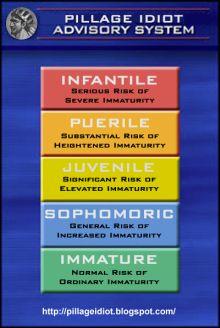Q: When you run a city that has a 12-lane interstate running through it, with four roads passing over the interstate, and three of those four roads have sidewalks or bike paths so that the interstate can safely be crossed by foot or bicycle, what do you do?
A: Naturally, you decide that the fourth of those roads must have its own hiker-bike path.
Q: And if there's no obvious way such a path can be built on the existing roadway, what do you do?
A: Naturally, you build a freestanding bike bridge over the interstate adjacent to the road overpass.
On October 20, the City of Rockville officially opened what I call, in homage to our Alaskan friends, the "bike bridge to nowhere" along MD28 (West Montgomery Ave.), over I-270, at Exit 6. The City calls it the "Sister City Friendship Bridge."
Bicyclists, pedestrians and skaters now have a connection between the east and west sides of Rockville that are divided by Interstate 270.If you don't read the entire article, however, you'll miss this interesting fact: The bridge cost $4.3 million to build.
Rockville city officials and nearly 30 adults and children on bicycles, skateboards and scooters gathered on the west side of the Rockville Sister City Friendship Bridge, located between West Montgomery Avenue [MD28] and Watts Branch Parkway, for the official ribbon-cutting ceremony on Saturday morning.
"Finally, we have something to link our city and bring everybody together to one Rockville," Mayor Larry Giammo said.
The $4.3 million bridge was named in honor of the 50-year sister city relationship between Rockville and Pinneberg, Germany.

To be clear, the bulk of this funding wasn't from Rockville. The City received a federal grant for the project under the Transportation Equity Act for the 21st Century (a/k/a the "TEA-21 Act") in the amount of $3,771,190. (Scroll down at the link.)
So for all of you who live outside Rockville, I'd like to thank you for paying for our bike bridge.



I didn't realize, by the way, that the TEA-21 included funding for bike paths, which it does, but considering what a pork-barrel racket the whole transportation funding regime is, I guess I shouldn't be surprised.
Now, I happen to be an avid biker, and I love having places to ride. I could give you a list of places around Montgomery County that need to be improved for bike riders.
But this new bike bridge.... I mean, sure, it's over three-tenths of a mile long, all told; the grading is difficult; and construction is generally very expensive. But I still find the sheer cost of it appalling.
Let me drop for a moment my objection to the cost, however, and focus on what's wrong with the concept.
First, there are three other Rockville bridges across I-270 for use by bikes: West Gude Drive, Falls Road, and Wootton Parkway, the first and last of which are part of the City's Millennium Trail, a wide paved trail that encircles most of Rockville. The new bridge at MD28 may make it easier for some people to go from the west to the east, but it's hardly essential. If you live near the western end of the bridge, you ride down Hurley Avenue, and across the trail on Wootton Parkway. If you're going downtown, you ride the length of Watts Branch Parkway, a road that's reasonably safe for riding, and up Falls Road and Maryland Avenue, where there are sidewalks. Your trip is a couple of miles longer, but it's $4.3 million cheaper.
Second, the new bridge connects portions of the City's layout that don't really provide much that's of value to bike riders. In particular, the eastern end of the bridge is across from the intersection of MD28 and Nelson Street. The City considers Nelson Street a bike route, but it's narrow and has a decent amount of car traffic. Not great for riding. MD28 itself leads into downtown Rockville, but it's a very heavily traveled two-lane road, on which biking is near-suicidal. The road has sidewalks, but they're narrow and paved in brick, and it's very bumpy riding on them. This is not enjoyable if you're a guy of the male persuasion, if you know what I mean. As the Duke says in Gilbert and Sullivan's Patience, "I do it, but I don't like it." Mind you, there are some beautiful old houses on this route, and I recommend you explore the area next time you're in Rockville, but I don't recommend it for bike riding.
Third, there isn't much on the west end of the bridge that people would need to ride to -- a fair number of houses, but that's about it. There are some office buildings across MD28, but those are accessible by way of Gude Drive and Research Blvd. In fact, I went over to visit the new bridge yesterday morning, during the height of rush hour, which is when I took the photos displayed here. During my 20-minute leisurely stroll the length of the bridge and back, I was all alone, except for one pair of joggers chatting with each other. To be fair, when I went back during the evening rush hour with my bike to see how well the bridge worked for riders, and I saw one other biker and two adults with strollers. (The answer, by the way, is that for bikers, it's a pretty good climb to get over the bridge from west to east; not a problem at all if you're in good shape, but casual riders and children may have a little trouble.)
Last, and above all, I have to return to the cost. Sure, it's mostly the yokels in the rest of the country (i.e., you) whose tax dollars are paying for it -- though we pay for yours, so I guess it's only fair. But $4.3 million for a bike bridge of limited utility? Isn't there a better use for that funding?
I can't really blame Rockville officials for seeking the TEA-21 money and running with it when it was granted. It's Congress's fault for having appropriated it in the first place. If we hadn't snagged a grant here, some other yokels (i.e., you) would have taken it.
Still, I can't help thinking back to one of my first experiences in Rockville when I moved here 20 years ago. I've written about this before.
When I moved to Rockville in 1987, we had a mayor named Steve van Grack, a trial lawyer (the mayor being a non-partisan, part-time official) who was infected by the dread federal-government disease. On Rockville Pike, Maryland Route 355, it was sometimes hard for pedestrians to have enough time to cross at the light, as it surely still is. Van Grack, rather than seeking an adjustment in the timing of the lights, rather than being extravagant and seeking funds to build pedestrian overpasses, was trying to drum up support for an expensive study to look into a "people mover" to take pedestrians up and down the Pike and across.I remember being shocked at this grandiose plan, clearly motivated by the prospect of federal funding. I guess some things never change.












|